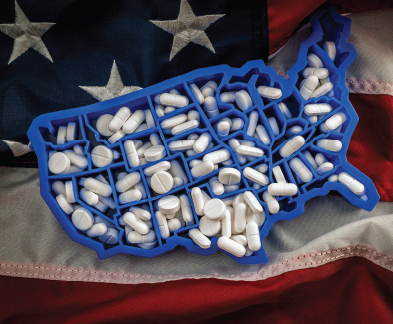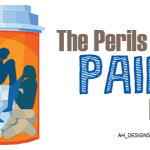
Victor Moussa / shutterstock.com
The opioid epidemic in the U.S. has destroyed thousands of lives and torn families apart. According to the Centers for Disease Control and Prevention, an average of 130 people in the U.S. die each day from an opioid overdose. From 1999 to 2017, more than 700,000 died as a result of drug overdoses. In 2017, the number of overdose deaths involving opioids (both legal prescription and illegal opioids, such as heroin) was six times higher than in 1999.
Three distinct waves have defined the increase in opioid overdose deaths. The first wave began in the 1990s and resulted from increased prescriptions by healthcare providers. Overdose deaths involving prescription opioids (natural and semisynthetic opioids and methadone) have increased steadily since 1999. The second wave began in 2010 and was marked by rapid increases in overdose deaths attributable to heroin. The third wave began in 2013 with significant increases in overdose deaths attributable to synthetic opioids, particularly those involving illicitly manufactured fentanyl.
In 2017, the U.S. Department of Health & Human Services declared a public health emergency and announced a five-point strategy to combat the opioid crisis:
- Improve access to treatment and recovery services;
- Promote the use of overdose-reversing drugs;
- Strengthen understanding of the epidemic through better public health surveillance;
- Provide support for cutting-edge research on pain and addiction; and
- Advance better practices for pain management.
In 2018, the SUPPORT for Patients and Communities Act was passed. This legislation reforms Medicare and Medicaid to better help patients with opioid addictions and promotes national education regarding the risks associated with opioid use.
Many states have also taken action to help reduce the number of opioid overdose deaths. A handful of states now require patients seeking opioid medication for chronic pain to enter into a contract with their providers before a prescription is written. However, a growing school of thought indicates these contracts may do more harm than good.
What Is an Opioid Contract?
The purpose of an opioid contract is to provide information regarding the pros and cons associated with opioid use. A contract is intended to deter abuse, improve the positive outcomes associated with opioid use and minimize the prescribing physician’s risk. As part of the contract, patients must agree to undergo random urine drug screens and pill counts, and to receive opioid prescriptions only from the physician identified in the contract.
By signing, patients agree to abide by the dosing and frequency prescribed, participate in certain programs, not request opioids or other pain medicine from other physicians, participate in mental health assessments if necessary and, to the extent possible, obtain all medications from one pharmacy. The contract typically includes a list of actions that would permit the physician to stop prescribing opioids or change the treatment plan. Finally, the contract usually includes a description of safety risks, potential side effects and tips for medication management.
In short, a contract ensures:


